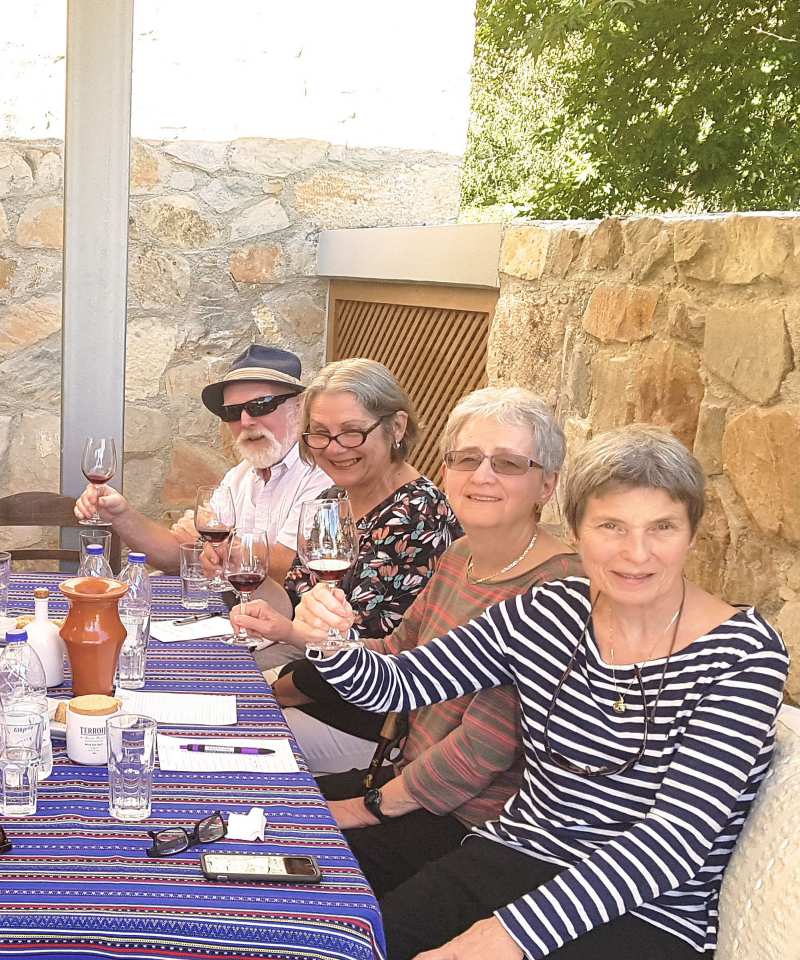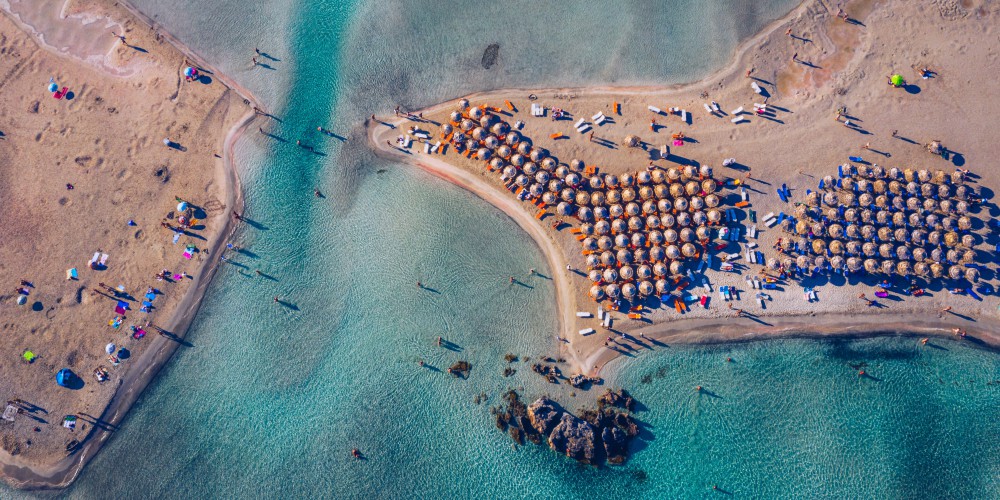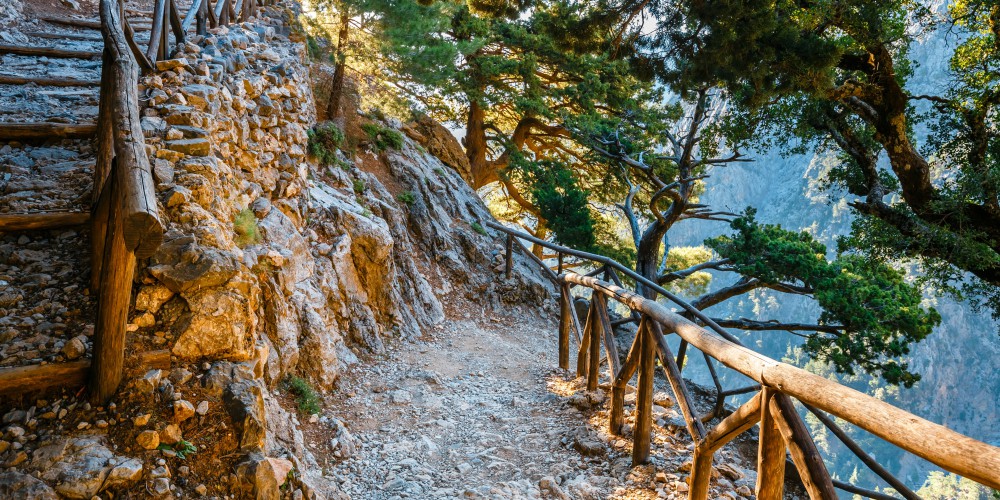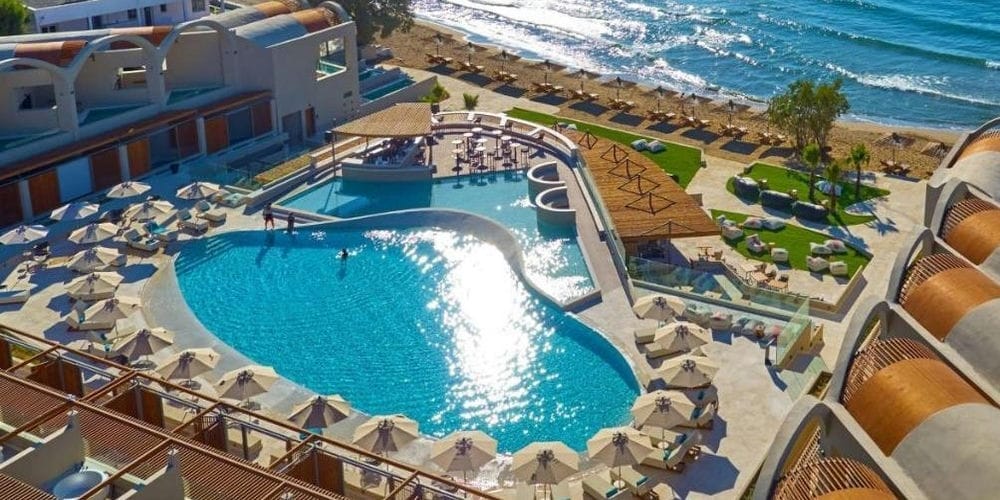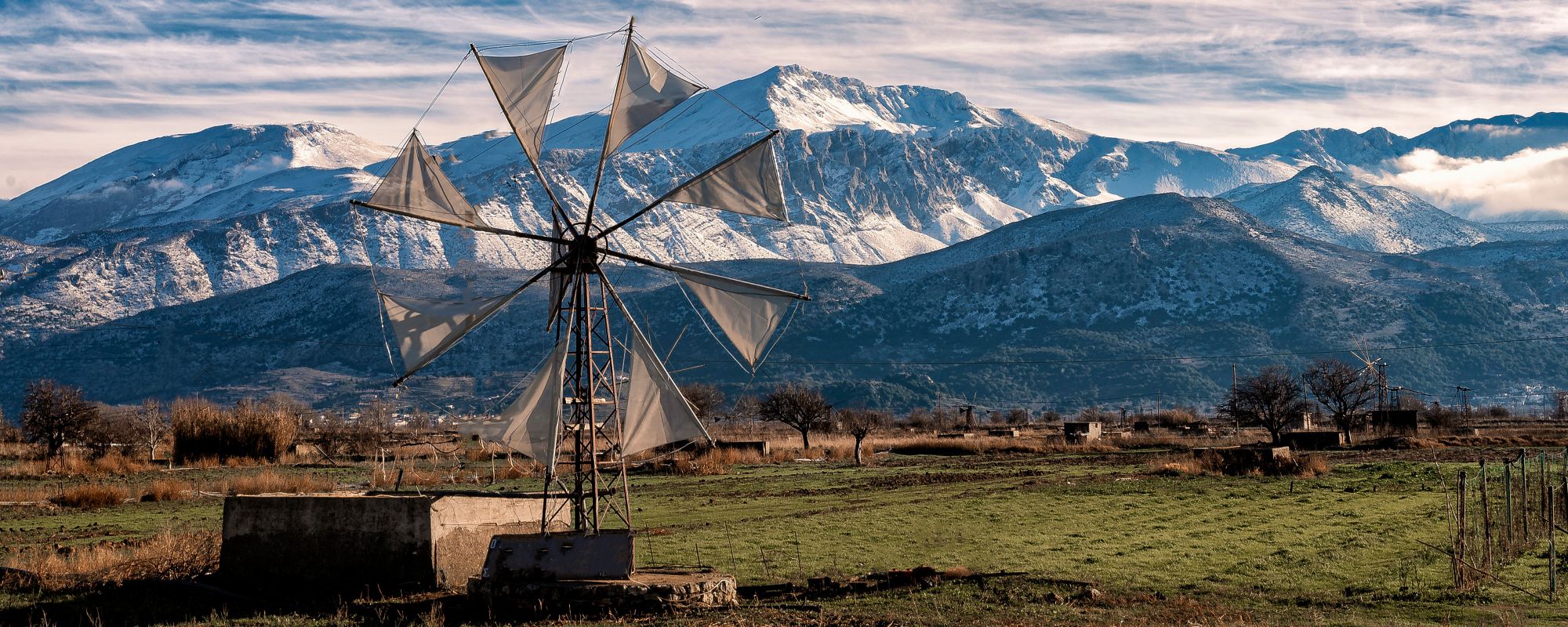
Best Things To Do in Crete
Key Takeaways
- Chania is a city on the northwest coast of Crete. It is perfect for strolling through the narrow alleys of the Old Town, visiting the Venetian Port, and enjoying the vibrant nightlife, relaxing beaches, museums, and archaeological sites.
- Rethymnon's Old Town offers a glimpse into the island's past, particularly during the Venetian and Ottoman periods.
- The Lasithi Plateau, located in Crete's eastern region, is a fertile plain surrounded by mountains.
- Argyroupoli, in the Prefecture of Rethymnon, is praised for its picturesque landscape, abundant water sources, and green vegetation. The village is known for its authentic Cretan gastronomy, with numerous tavernas offering traditional dishes.
When you’ve finally pulled the trigger and booked your dream destination to spend your much-needed vacations on, the last thing you want to do is return back home only to realize that you didn’t explore its full potential and that you didn’t get to see and experience all you could have!
Rid yourself of that possibility by reading below all the top sites of Crete. Get a well-rounded idea of what you must not miss during your visit to the biggest Greek island and ensure your vacations on the Greek island of Crete will be your most memorable yet.
For Those Who Want to Visit the Most Beautiful Towns and Villages of Crete
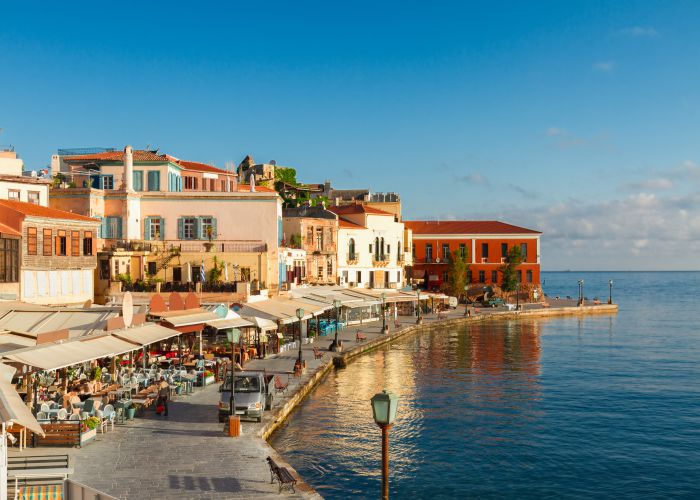 Harbor of Chania, the best things to do in Crete, Greece - credits: Neirfys/Depositphotos.com
Harbor of Chania, the best things to do in Crete, Greece - credits: Neirfys/Depositphotos.com
Stroll the Venetian Port and the Old Town of Chania

Chania is a city on the northwest coast of Crete, known for its picturesque port, magical old town, and heritage, which is evident in everything you turn your eyes on.
Fun in its diversity, the city of Chania offers everything one could possibly want, from vibrant nightlife and relaxing beaches to museums of significant historical value and archaeological sites that make history lovers lust after it!
The Old Town of Chania is nothing short of breathtaking. The narrow alley will lead you to scenic neighborhoods, cozy cafes and fantastic restaurants, and a selection of shops to buy bits and bobs.
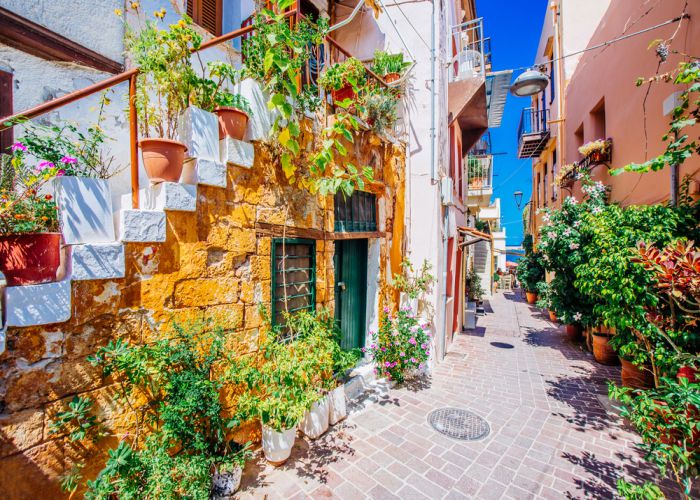 Chania, the best things to do in Crete - credits: Aetherial Images/Shutterstock.com
Chania, the best things to do in Crete - credits: Aetherial Images/Shutterstock.com
On Karaoli Dimitriou Street, you can even find authentic Cretan knives, famous across the whole of Greece!
The Venetian port is no less extraordinary. During the 14th century, Venetians built this magnificent port which is surrounded by the Old Town of Chania.
There, you can gaze at the Venetian Lighthouse, overlooking the Mediterranean, and catch the sunset to take in the impeccable view of the sea, marrying the sky in an explosion of colors.
Admire the Turkish Architecture in the Old Town of Rethymnon
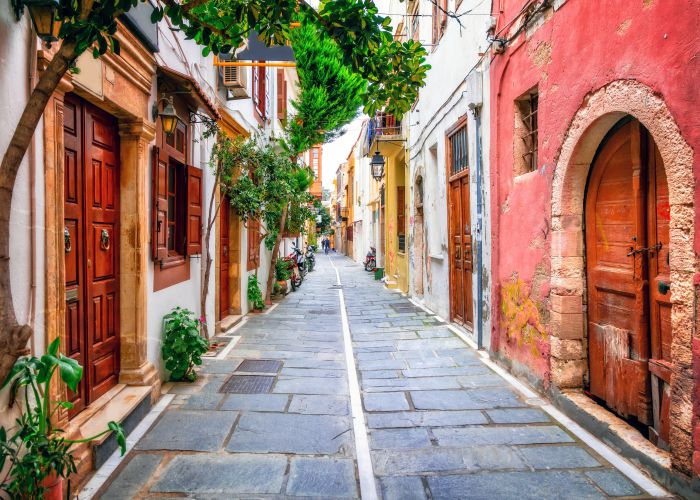 Rethymno Old Town, the best things to do in Crete - credits: leoks/Shutterstock.com
Rethymno Old Town, the best things to do in Crete - credits: leoks/Shutterstock.com
Another incredible activity on Crete is to visit Rethymnon's Old Town. Rethymnon is not only a beautiful Venetian city with an idyllic port and a crowded cobbled alley; it is an area where you can witness the island's past in its glory.
In the old town of Rethymnon, the people who imprinted its history were initially the Venetians and even more the Ottomans from the 16th century.
In every alley of the old town, in every building where the eye rests, there are memories from the past and questions from their lives.
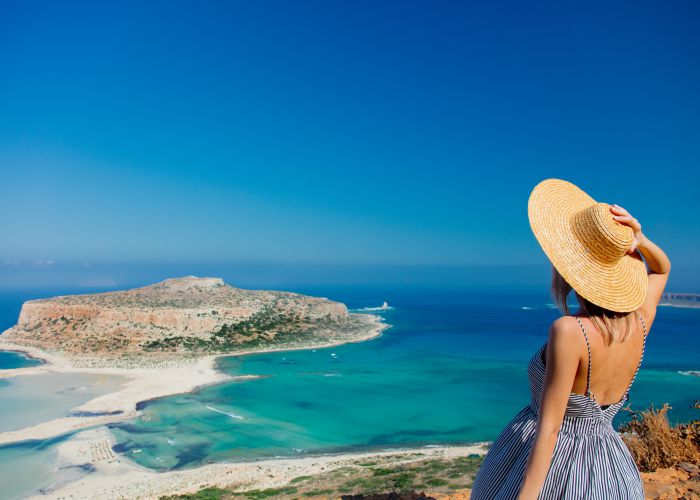 View of Balos Lagoon, Crete, Greece - credits: Masson/Shutterstock.com
View of Balos Lagoon, Crete, Greece - credits: Masson/Shutterstock.com
How did Turks and Greeks, Muslims, and Zimides live together? Did they live in the same buildings? How was their market? What architectural elements of the predecessors did they preserve, and what newer did they bring to the city?
You can tour the old Ottoman town of Rethymnon and see the buildings of that period. First of all, you will come across a purely Ottoman building on Tsichli Street, which still preserves its equipment, hammam, and kitchen in its original form.
Moreover, a second building with Ottoman architecture lies on Arkadiou Street and has been restored in an exemplary way. As a result, it is interesting to see and get a glimpse into the past.
Of course, you should also stop and see the mosque of Odu Topazi, Valide Turkan. It used to serve as a warehouse for the island's Archaeological Service for many years and is now being restored again by the Ephorate of Antiquities of Rethymno in order to be put to use.
Stroll the Lasithi Plateau
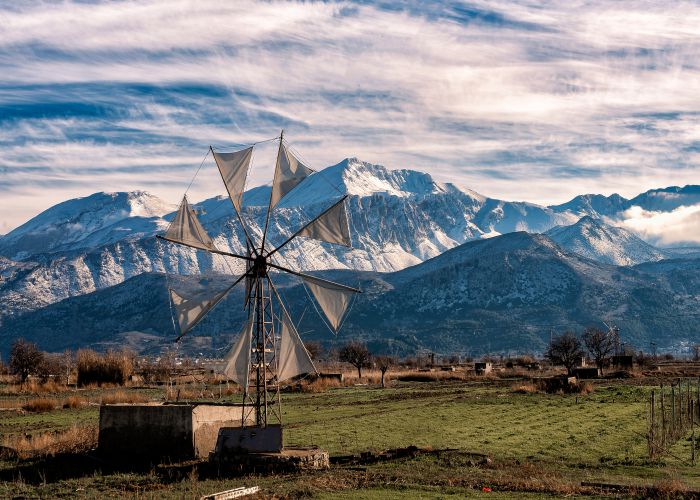 Lasithi plateau, the best things to do in Crete - credits: Antonis_Brt/Shutterstock.com
Lasithi plateau, the best things to do in Crete - credits: Antonis_Brt/Shutterstock.com
Once you have explored Heraklion Central, take a trip eastward. Lasithi is Crete's easternmost region and is likewise a great spot of treasure for Crete mountains' tradition.
A piece of Lasithi land with an average altitude of 850, on the west-northwest slopes of the Diktis massif, the famous Lasithi Plateau is the largest and most fertile plain of the mega-island.
Apple trees, walnut trees, pear trees, cherries, almond trees, and plum trees are grown on the Lasithi Plateau, where excellent quality agricultural products are produced, and thousands of goats and sheep graze.
 Cretan cruise - credits: Igor_Tichonow/Shutterstock.com
Cretan cruise - credits: Igor_Tichonow/Shutterstock.com
The area's topography is composed of a large flat arable area, dozens of peaks around (their altitude varies from 1,163 to 2,148 at Spathi Madara, the highest peak of Diktis), small fertile valleys, and mountains.
The first traces of human activity on the Lasithi Plateau date back to the Neolithic Age.
During the Venetian rule in the 16th century, the area of the Plateau was initially inhabited by Venetian settlers, which came mainly from Nafplion and Monemvasia, and then by local growers, who were obliged to hand over half of their harvest to the Venetian authorities.
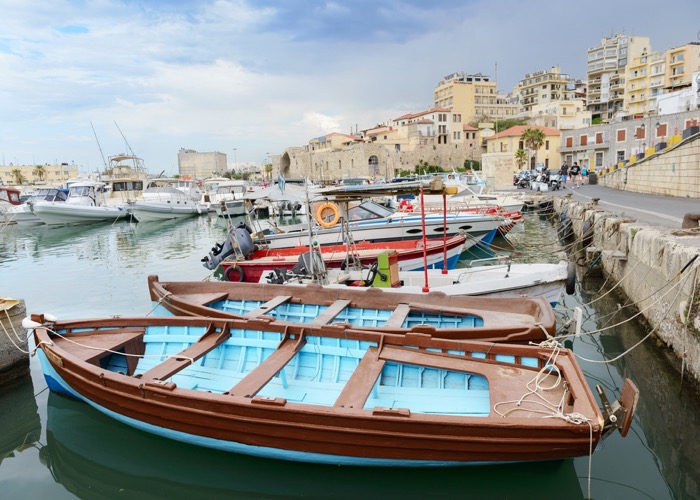 Heraklion port, the best things to do in Crete - credits: Pamuk/Shutterstock.com
Heraklion port, the best things to do in Crete - credits: Pamuk/Shutterstock.com
The Plateau was a center and hideout of rebels during the Turkish occupation, which began in 1649.
The most important villages of the Plateau are Tzermiado, Agios Georgios, and Psychro. The latter gathers the largest tourist traffic of the Plateau due to the famous Dikteo Andros.
The remaining settlements include Avrakontes, Agios Konstantinos, Agios Charalambos, Kaminaki, Kato Metohi, Koudoumalia, Lagou, Magoulas, Marmaketo, Mesa Lasithaki, Mesa Lasithi, Pinakiano, and Plati.
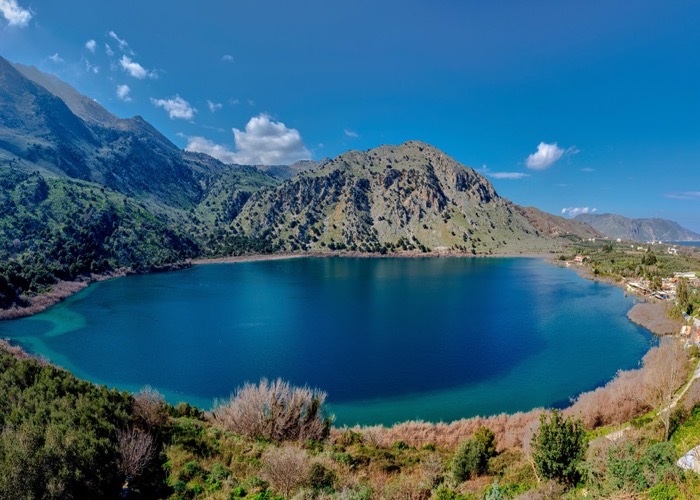 Lake Kournas, the best things to do in Crete - credits: Aphotog/Shutterstock.com
Lake Kournas, the best things to do in Crete - credits: Aphotog/Shutterstock.com
Every village on the island still has its own Creta tradition and rituals that remain authentic. One of my favorite activities in Crete is actually hopping in the car and driving through every village.
It is also possible that one walks the streets, checks the houses and the 'kafeneio,' the typical coffee shop where people gather for a glass or a cup of traditional Greek coffee or a glass of the local spirit of raki.
There are thousands of Cretan villages where one can find this island's different sides and experiences - a less postcard-based life.
Enjoy the food and scenery of Argyroupolis
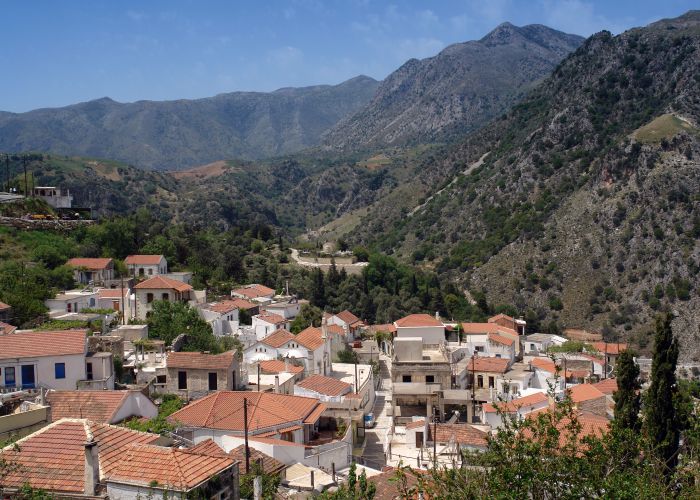 Argyroupoli village, the best things to do in Crete - credits: bensliman_hassan/Shutterstock.com
Argyroupoli village, the best things to do in Crete - credits: bensliman_hassan/Shutterstock.com
Argyroupoli, in the Prefecture of Rethymnon, is a secret paradise. It is just 25 kilometers southwest of the beloved Rethymnon.
With a very smooth and easy route, you will find yourselves in a green landscape beyond any imagination!
Argyroupoli is built at a relatively low altitude, around 260 meters, and between two rivers, the Mousela, and the Petres.
The liquid element gives an orgy of vegetation, while the source of the Holy Power looks like something out of a dreamy fairy tale!
The beautiful settlement, which has been officially designated as one of the most authentic in Crete, with its beautiful cobblestones and stone houses, is a continuation of the ancient Lappa.
It is natural for such a cool landscape, with abundant water, to protect man and create civilization. The area has been continuously inhabited since the Neolithic era, while the traveler will admire the abundant findings of the excavations at the Archaeological Museum of Rethymnon.
 Balos sunset, Crete, Greece - credits: natalyphotography/Shutterstock.com
Balos sunset, Crete, Greece - credits: natalyphotography/Shutterstock.com
The Greco-Roman statues found there testify to the cultural wealth of the place. Very close to the village, there are Roman tombs carved into the rock and a small church dedicated to the Five Virgins who were martyred in the persecution of the emperor Decius in 250 AD.
However, we have reason to believe that there is also a mythological background since this area, with the abundant waters and orgiastic vegetation, must have been adored by Virgin Nymphs as well.
When you reach the village square, the lovely Agios Ioannis, you should make a point to visit the church of Agios Ioannis, built in the 18th century, and the Folklore Museum.
The settlement is divided into two beautiful neighborhoods: Ano Chori and Kato Chori. A walk around the neighborhoods will show the locals' hospitable mood.
Argyroupoli has emerged as a center of Cretan gastronomy. Not only do the numerous tavernas in the square create imaginative dishes with the smells and flavors of the Cretan tradition, but there is also a systematic record of both the herbs and wild grasses, as well as all the ancient recipes.
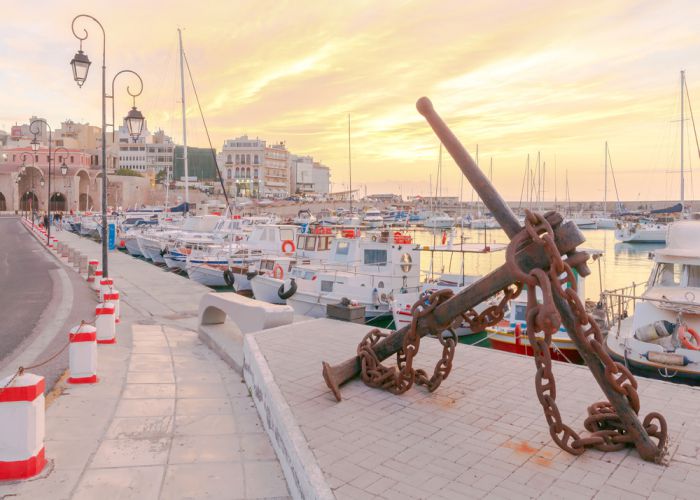 Fishing boats, the best things to od in Crete - credits: kavalenkau/Shutterstock.com
Fishing boats, the best things to od in Crete - credits: kavalenkau/Shutterstock.com
Of course, the spirit of raki flows abundantly, but it is also worth trying the local deep rosé wine of very high standards.
Last but not least, the paths around Argyroupoli are truly enchanting. Apart from the village itself, which is beautiful, the traveler can hike through incredibly beautiful nature with centuries-old trees and traditional mills towards Lake Kourna, descend to the seaside village of Georgioupolis and enjoy the mouth of the Almyros River and gaze at the White Mountains.
Catch a ferry to Loutro
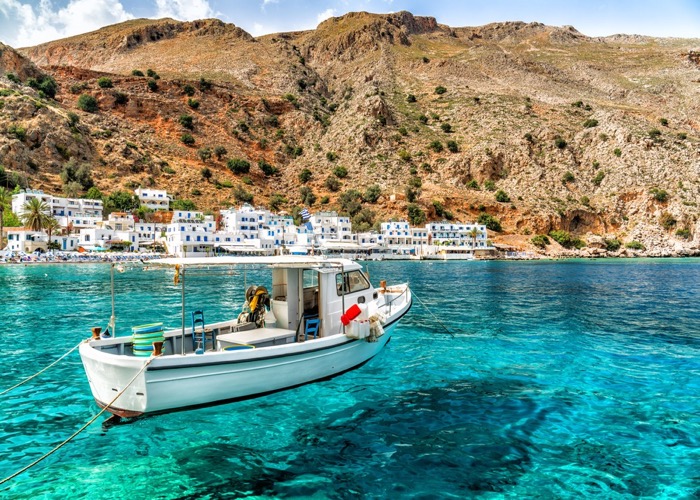 Loutro, the best things to do in Crete - credits: arturasker/Shutterstock.com
Loutro, the best things to do in Crete - credits: arturasker/Shutterstock.com
Loutro is a small, picturesque seaside village on the southern coast of the prefecture of Chania, in Sfakia, Crete.
One of its most enchanting elements is that there are no cars or roads. The only car that exists travels 20 meters every day, just enough to take the garbage from a hotel to the pier and pick up supplies.
All you will see in regard to means of transport are small boats and sea vessels.
For this reason, to reach Loutro, you will either have to walk an hour and a half from Chora Sfakion or board a boat. There are daily boat routes to and from Chora Sfakion, Sougia, Gavdos, Paleochora, and Agia Roumeli.
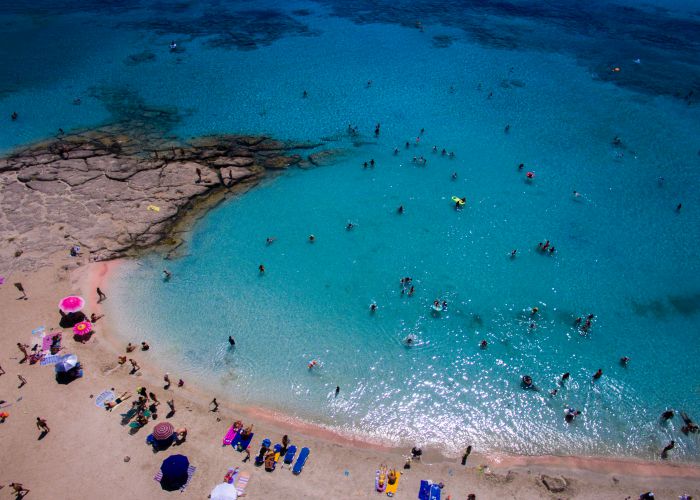 Elafonisi beach, the best things to do in Crete - credits: _Alexandros_Kant-shutterstock.com
Elafonisi beach, the best things to do in Crete - credits: _Alexandros_Kant-shutterstock.com
It is believed that on the spot where the village is located, there was the ancient city of Phoenice.
Later, it became the winter port of the city of Sfakia because the enclosed bay and the small island at its entrance created a natural harbor where ships could be safe even in very bad weather conditions.
The village was named after the baths found there ('loutro' means 'bath' in Greek), the water of which came from Anopolis.
Among the old and beautiful buildings that you can admire is the government building that was used during the revolution of 1821.
In Loutro, it is worth seeing the ruins of ancient Aradena with the Byzantine church of the Archangel Michael and Anopolis. This small fishing village has not yet been "spoiled" by mass tourism. It is a well-kept secret you need to explore.
Get introduced to the picturesque Plakias Village
 Plakias village, the best things to do in Crete - credits: Zbynek_Jirousek/Shutterstock.com
Plakias village, the best things to do in Crete - credits: Zbynek_Jirousek/Shutterstock.com
On the south coast of Crete and only 32 km from the city of Rethymno, the village of Plakias is a unique destination and an excellent choice for an unforgettable vacation.
Starting from the city of Rethymnon and after an impressive 30-minute drive through mountains, hills, and valleys inland, you arrive at the quiet fishing village of Plakias with its unique view of the endless blue sea and the sandy beach.
Taverns and restaurants, some clubs, cafes, and traditional cafes for Greek coffee and raki offer various options to relax during the holidays.
Hospitable people in the small streets, fishermen, and small children welcome you in the village and are at your disposal for any information.
Plakias is only 32 km from Rethymnon and 90 km from Chania, where the nearest airport is located, while the city of Heraklion, with the island's largest airport, is only 110 km away.
Arolithos Village
 Arolithos, the best things to do in Crete - credits: Adellyne/Shutterstock.com
Arolithos, the best things to do in Crete - credits: Adellyne/Shutterstock.com
Arolithos is not only a tourist complex but a representation of a traditional Cretan village created out of love for Cretan tradition.
It is located just 11 km outside of Heraklion, on the old national road of Heraklion-Rethymno, on the slope of a mountain.
Visitors can see the folklore collection in the Museum of rural history and folk art, stroll through the stone-built alleys, taste Cretan flavors, and spend relaxing days in a traditional environment. Upon agreement, you can also participate in folk arts workshops.
The facilities of Arolithos include a hotel, a tavern, a cafe, rural history and folk art museum, traditional houses, a ceramics workshop, a painting workshop, a weaving workshop, an old blacksmith shop, and shops with Cretan products, and a church.
For Those Who Want to Swim in the Most Gorgeous Cretan Beaches
Swim at Falassarna Beach
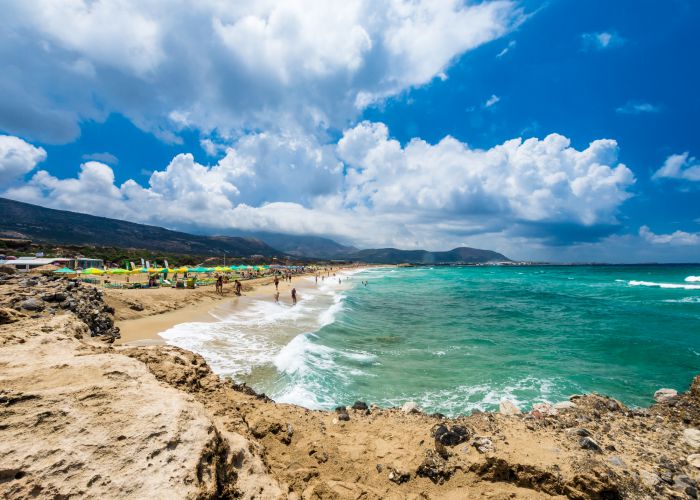 Falasarna beach, the best things to do in Crete - credits: lucianbolca/Depositphotos.com
Falasarna beach, the best things to do in Crete - credits: lucianbolca/Depositphotos.com
Falasarna is today one of the most famous destinations in Crete, both for its beaches and its ecological interest. Visitors who arrive from Athens to Crete always run to it as soon as they get the chance.
Falasarna and its national park have been included in the Natura 2000 project due to the area's variety of flora and fauna and its special natural beauty.
Facing Falasarna, two large beaches stretch out in front of you, which are actually separated by some sand dunes, with the southern one (Pachia Ammos) being longer and wider.
Further on Crete's southern coast, you will find two more beaches: a beach with sand but rocks at the bottom and the pebble beach next to the small harbor.
Falasarna Beach has been awarded as the most beautiful beach in Crete and is always included in the top 10 of the best European beaches, with wonderful fine white sand and warm, crystal clear, and crystal clear waters.
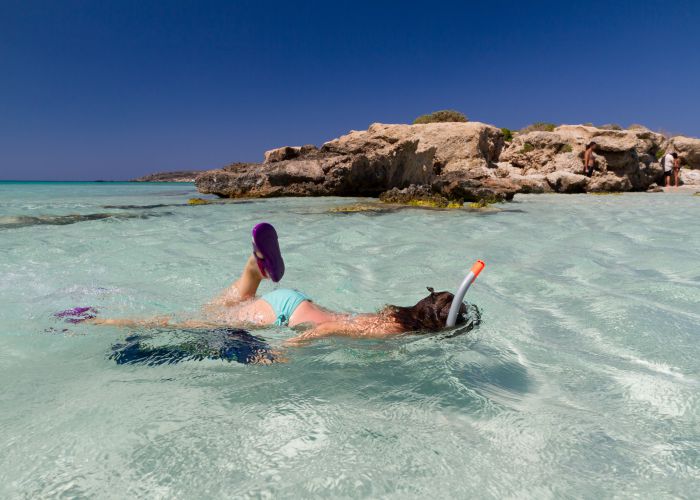 Snorkeling in Crete, the best things to do in Crete - credits: photoshooter2015/Shutterstock.com
Snorkeling in Crete, the best things to do in Crete - credits: photoshooter2015/Shutterstock.com
Pachia Ammos beach is so big that you will hardly feel overwhelmed by people, even in the heart of summer when hundreds of others will be around you.
Its only disadvantage is that it is exposed to the north and west winds, so you will often encounter big waves. However, this is what makes it popular with those who like windsurfing
The beach at Falasarna is fully organized, with umbrellas and sunbeds in its largest part. There are, however, several free spots for those who prefer to put their own umbrella and towel on the sand.
There are bars and cafes on the beach, and beach parties are often held in the evenings. Don't be in a hurry to leave because the fun goes up as time goes by, especially after the spectacular sunset at Falasarna, one of the most impressive in Crete.
The beach also offers water sports, while there is also a beach volleyball court.
Falasarna is also ideal for couples in love and hopeless romantics because there, you will enjoy the most beautiful sunset in western Crete.
Make Sand Castles on the Pink Sand Beach of Elafonisi
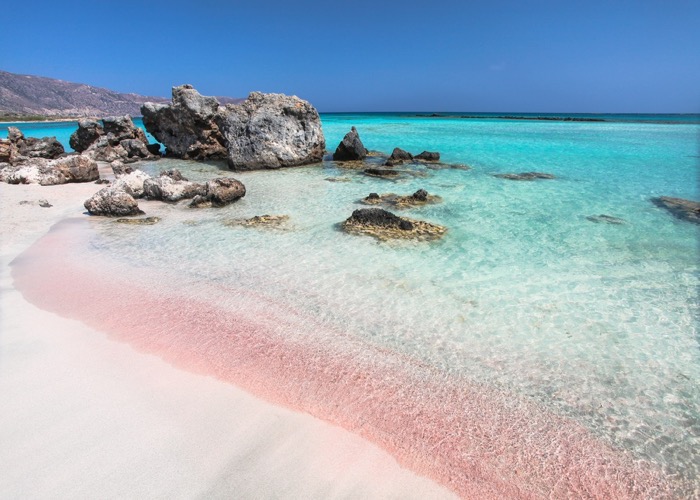 Elafonisi beach, the best things to do in Crete - credits: Zakhar Ma/Shutterstock.com
Elafonisi beach, the best things to do in Crete - credits: Zakhar Ma/Shutterstock.com
Elafonisi Beach is actually an island separated from the southwest coast of Crete by a shallow, warm lagoon and a sandy beach that sinks under about a meter of water at most during high tide.
Elafonisi Beach on the mainland and on the gravel side, which is never submerged, is populated by hundreds of sunbeds, umbrellas, and thousands of tourists in the high season.
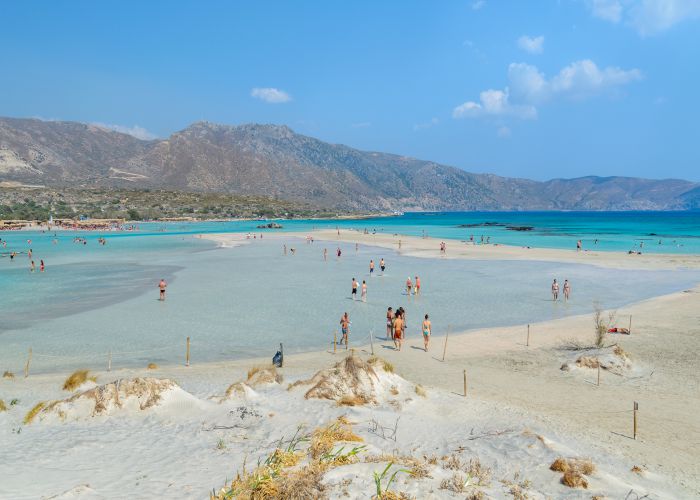 Elafonisi beach - credits: Vladimir1984/Shutterstock.com
Elafonisi beach - credits: Vladimir1984/Shutterstock.com
But visitors can step out onto the island to enter another world. Elafonisi Beach is an internationally classified nature reserve, and because chairs and umbrellas are not allowed, and there is no shade, fewer people make their way.
Even in the busiest season, it is possible to find quiet little coves on Elafonisi Beach, making your relaxing vacation a dream come true.
Swim In The Hippie Beach of Matala
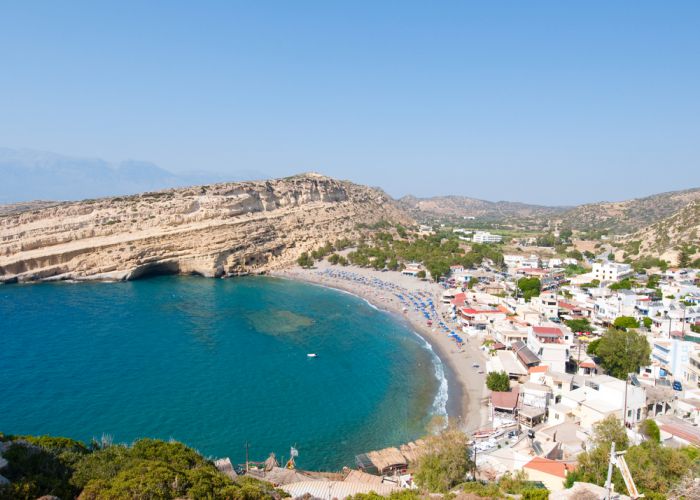 Matala Beach, the best things to do in Crete - credits: lornet/Shutterstock.com
Matala Beach, the best things to do in Crete - credits: lornet/Shutterstock.com
The southern shoreline of Heraklion is famous worldwide for the beach of Matala. This beach has become a legend at 71km from Heraklion, in the Gulf of Mesara.
A few meters from the brown caves, on the rocks just outside the village in South Crete, where hippies from all over the world found refuge in the 60s and 70s, the sandy beach of Matala is still there - albeit in a milder and "touristy" way – to attract visitors.
Matala Beach was a popular hippie meeting place from the early 1960s and was the first place to which expats would return. They weren't digital nomads. However, they were definitely the first form of modern nomadism and rebellion against the norm.
Today, Matala remains a place of relaxation, meditation, and endless swimming, although in a much more conventional and much less rebellious way.
The beauty of Matala Beach makes it a must-visit destination in Crete, regardless of its fascinating past; don't skip a visit during your summer vacations!
Head to Paradise on Earth: Preveli beach
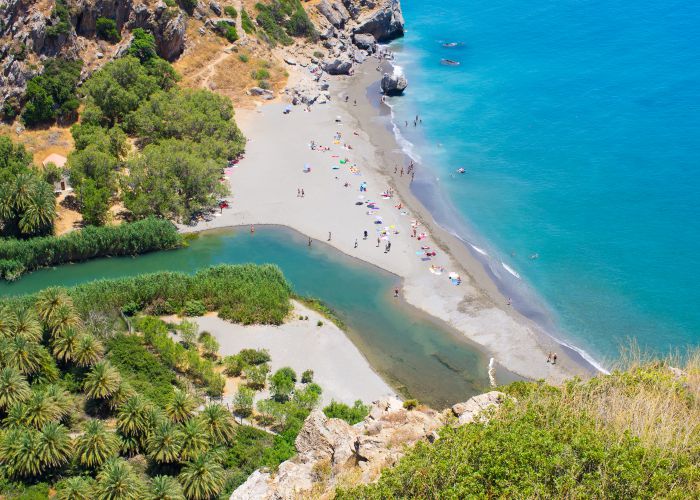 Preveli palm beach - credits: CCat82/Shutterstock.com
Preveli palm beach - credits: CCat82/Shutterstock.com
The area of Preveli is located approximately 38 km south of Rethymno in Crete and 10 km east of Plakias below the monastery of Preveli.
The homonymous beach is also known as Preveli palm beach, Lake Preveli, or Phoenix and is a uniquely beautiful sandy beach in Crete with a small palm grove that makes it look exotic.
On Preveli Beach are also the mouths of the Kourtaliotis River, which has enough water, even in the summer, to form a small lagoon before it flows into the sea. In the past, it was also a favorite destination for hippies.
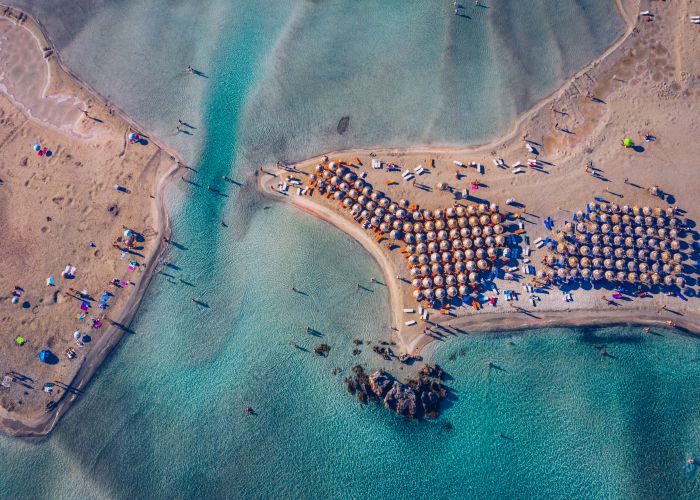 Elafonisi, the best things to do in Crete - credits: _DaLiu-shutterstock.com
Elafonisi, the best things to do in Crete - credits: _DaLiu-shutterstock.com
On the banks of the Great River, the second largest palm forest in Crete is formed, after the palm forest in Vai. The river forms a small lake 500 km long at its exit to the sea with water all year round.
You can walk along the river, under the shade of palm trees, and start to climb the magnificent gorge. You can take a cool bath in the large pools that form every now and then.
At the outlet of the river, a sandy beach is formed with a pebbly bottom and very cool waters due to the river.
In the eastern part of the beach, there is a beautiful rock in the sea that resembles a mast or a heart.
Sunbathe on the Palm Tree Beach of Vai
 Vai Beach, the best things to do in Crete - credits: Georgios_Tsichlis/Shutterstock.com
Vai Beach, the best things to do in Crete - credits: Georgios_Tsichlis/Shutterstock.com
The eastern part of Crete features one of the most beautiful beaches in the country. Wherever close to the water you drive around Lasithi, you will have breathtaking panoramic views and many of Crete's cleanest and most famous beaches.
The fantastic beach of Vai is famous because it houses one of the biggest European date palm forests.
It is positioned in an enclosed bay that is protected against wind and tides and has amenities, including restaurants, a bathhouse, and a lifeguard.
Dive into the turquoise waters of Kedrodassos
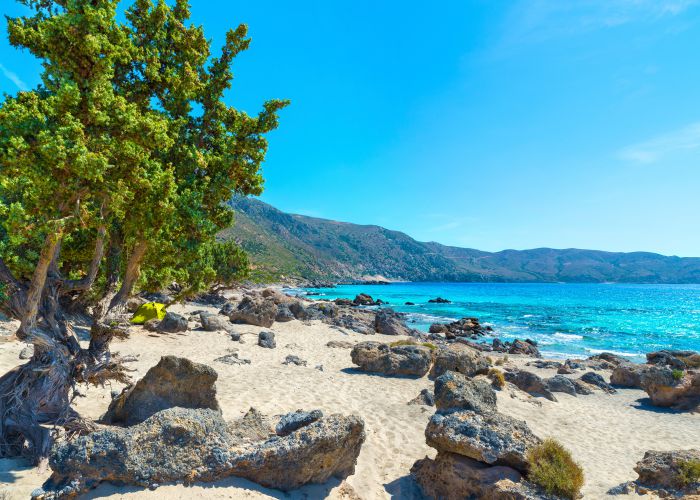 Kedrodasos, the best things to do in Crete - credits: Vasilii_L/Shutterstock.com
Kedrodasos, the best things to do in Crete - credits: Vasilii_L/Shutterstock.com
Kedrodasos Beach is located approximately 80 kilometers southwest of Chania and quite close to the famous Elafonisi beach. It is rightly described as a paradise on earth, as the scenery that unfolds is a jewel of nature.
Full of juniper trees, which look like cedars, the beach stands out for its uniqueness. If you find yourself there, remember that the trees are very fragile, so it is better not to approach them.
The forest covers about 110 acres, and thus the spot is an ideal place for camping. In fact, it is considered one of the favorite nudist beaches.
This Cretan beach is secluded and is an ideal place for those who want to relax and rest, listening only to the splash of the sea.
For Those Who Want to Admire the Wonders of Cretan Nature
Get a Close look at Dikteon Cave
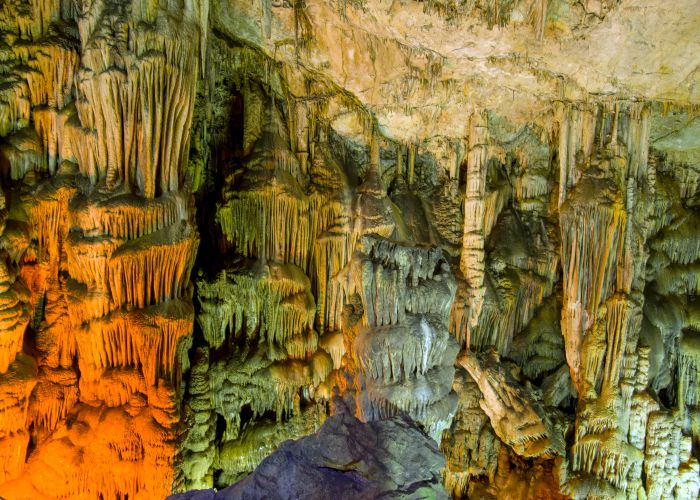 Dikteon Cave - credits: Andreas_Wolochow/Shutterstock.com
Dikteon Cave - credits: Andreas_Wolochow/Shutterstock.com
At the top of the list of attractions and natural wonders of the Lasithi Plateau is, of course, the cave of Psychro, at a distance of 1 km SW from the village of the same name (altitude 1,025).
The cave of Psychros was identified with the famous cave of Dikteo Andros. According to Greek mythology, Rhea fled to give birth to Zeus, who was raised by the goat Amaltheia under the protection and supervision of the shepherds.
According to another tradition, Dikteo Andros was the place where Zeus brought Europa and united with her after abducting her from Phoenicia.
Besides, it is said that in Dikteo Andros, on the one hand, the famous seer Epimenides fell asleep for tens of years and had visions, and on the other, the Harpies lived, monstrous birds of prey with female faces and messengers of death, who caused evil.
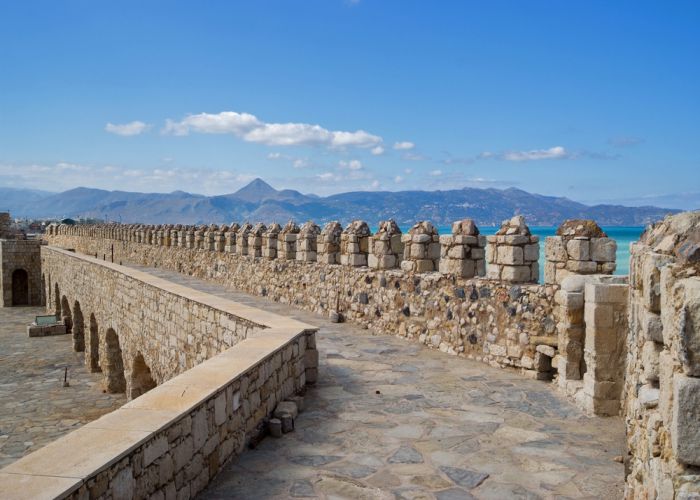 The fortress of Heraklion city, the best things to do in Crete - credits: Lejczer/Shutterstock.com
The fortress of Heraklion city, the best things to do in Crete - credits: Lejczer/Shutterstock.com
However, the identification of the cave of Psychros with Dikteo Andros is today disputed by several scholars.
What is certain is that the cave of Psychro, with its huge stalagmite and stalactite formations, was a particularly important place of worship in Minoan Crete, a place of uninterrupted worship from the Early Minoan Times (3rd millennium BC) to the Archaic Period (7th-6th century BC. X.)
The cave continued to have visitors during Roman times.
Devotees came to the cave even from faraway places to honor the deity and bring offerings (figurines, tools, double chisels, weapons, seal stones, jewelry, etc.), many of which are exhibited in the Archaeological Museum of Heraklion.
The excavations carried out in the area of the cave brought to light, among all the amazing things, architectural findings, Neolithic sherds, Proto-Minoan burials, and inscriptions with Linear A writing.
Hike the Famous Samaria Gorge National Park
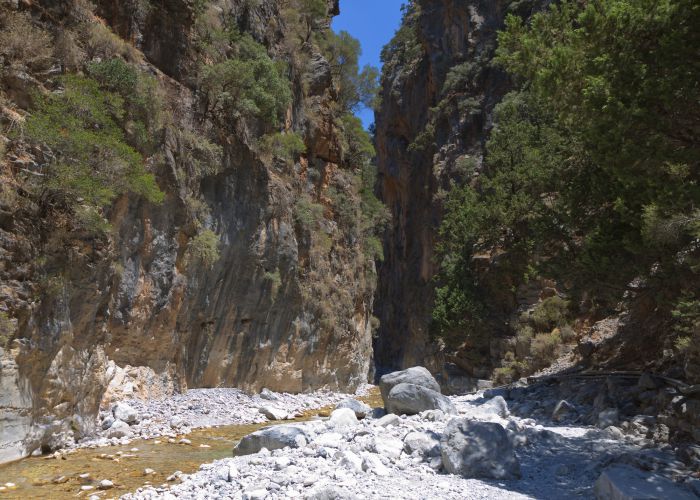
Not for the faint-hearted, Samaria Gorge is one of the largest gorges in Europe and one of the most popular destinations in Crete, especially for nature and fitness lovers worldwide.
Proof comes in the numbers, as roughly 250,000 to 300,000 visitors cross it from early May to October each year.
The 16-km hike to the Samaria Gorge starts at Xyloskalo on the Omalos plateau, 40 kilometers from the city of Chania, and ends after a 6 to 8-hour hike on the southern coast of Crete to the Libyan Sea.
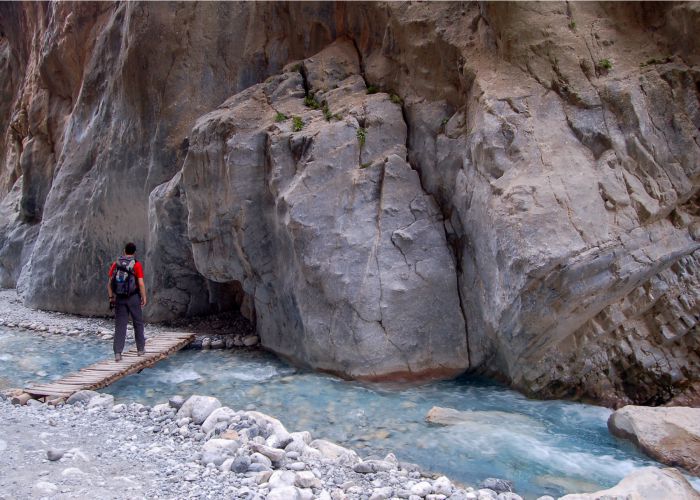 Hiking Samaria Gorge - credits: Efstathios_Chatzistathis/Shutterstock.com
Hiking Samaria Gorge - credits: Efstathios_Chatzistathis/Shutterstock.com
The impressive trail passes by cliffs and dense forests with rare flora and fauna, some of which are exclusive to the Cretan land. But awestriking landscapes are not the only things that a hike through Samaria Gorge offers.
On the way to the seaside village of Agia Roumeli, the trail passes through abandoned settlements with a history lost in the depths of centuries.
The most striking part of the famous gorge is the 'Doors,' the narrowest point in the canyon with a minimum width of 3.5 meters, a length of 12 meters, and vertical walls about 100 meters high.
It offers the perfect setting for top-quality photos, so take a break and click away to your heart’s content!
Hike Through the Imposing Imbros Gorge
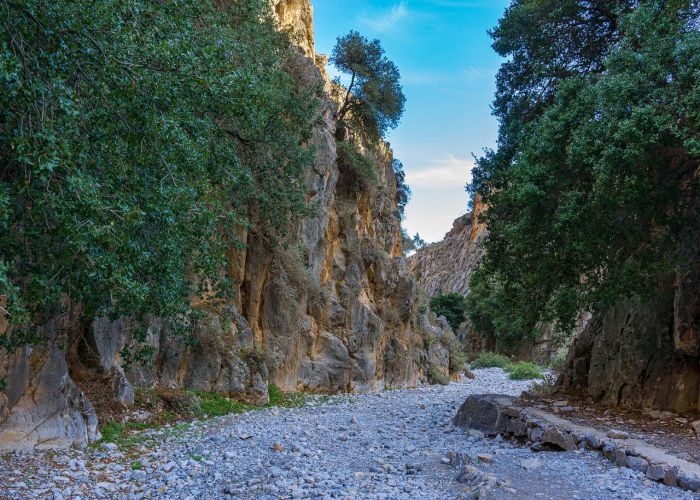 Imbros Gorge, the best things to do in Crete - credits: Pixabay.com
Imbros Gorge, the best things to do in Crete - credits: Pixabay.com
The gorge of Imbros is located near Chora Sfakion and is the third most popular gorge in Crete after Samaria and Agia Irini.
The scenery is beautiful, and the ease of descent makes the descent of Imbros ideal for families with children. The canyon's length is 11 kilometers, and the journey takes 2-3 hours.
The route starts from the small mountain village of Imvrou, 700 meters above sea level. The initial part of the gorge, which is quite open, is called Porofarango or Porolagos.
Initially, the course is downhill, and the side walls are relatively low. But the canyon narrows continuously during the descent, the side walls rise higher, and the landscape becomes more impressive.
In many parts of the gorge, one can find traces of the old cobblestones that were once the main path connecting Sfakia with Chania.
 Gramvousa, Crete, Greece - credits: N.B. photo/Shutterstock.com
Gramvousa, Crete, Greece - credits: N.B. photo/Shutterstock.com
There were not a few times that battles were fought with the Ottomans in the gorge, the only passage of the Sfakia Province to the north, during the Turkish occupation.
Perhaps the most impressive point of the Gorge is Stenada. There, the walls are only 1.6m apart, their height reaches 300m, and the rocks are sculpted with beautiful formations.
After this narrow point, the gorge opens up, and you can come across a rest area at the Mesofarango location. Here there is a Venetian water cistern and the house of the keeper of the gorge.
Continuing your course, you will pass through a few more narrow passages and reach the canyon exit at the mountain village of Komitades. There are a few tavernas at the exit, while inside the village, there are more options.
Explore the Luscious Azilakodasos Forest
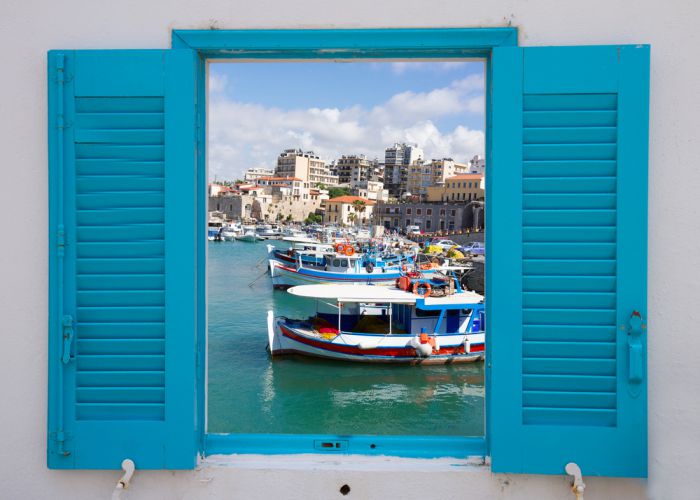 Heraklion, the best things to do in Crete - credits: Neirfy/Shutterstock.com
Heraklion, the best things to do in Crete - credits: Neirfy/Shutterstock.com
Located in the region of Lasithi, Azilakodasos is one of the few and largest forests of its kind in the Mediterranean.
In Crete, there are smaller forests in Rouva and Georgioupoli, and in the Aegean, they exist in a few other Greek islands, with the best known being the forest of 'Ranti' in Ikaria.
Azilakodasos is overgrown with towering trees of the genus Quercusilex ('azilakes' in the Cretan dialect, 'aria' in the rest of Greece), a rare tree between oak and holly.
'Azilakes' are centuries-old trees, a distinct species of sclerophyllous evergreen oak, particularly resistant to extreme conditions, usually found scattered in open spaces and rarely forming forests.
They reach a height of 25m. and have leaves ovate, lanceolate, sometimes with slightly toothed tips and bitter acorns, in cups with fluffy scales.
For Those Who Want to Discover the History of Crete
Visit Knossos Palace
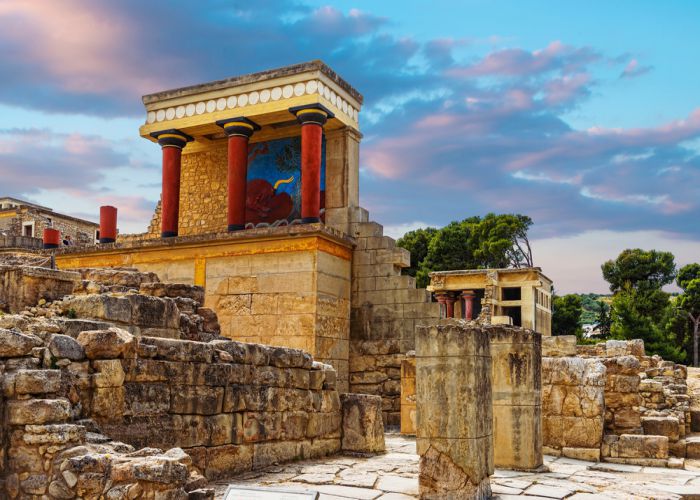
The Minoan palace of Knossos is divided into different sections, each of which used to have separate uses. It was multi-storeyed, built of chiseled structures, and decorated with miraculous frescoes depicting possibly religious ceremonies.
The access was through three entrances to its north, west, and south sides. The first excavations in the area of Knossos were carried out in 1878 by the merchant Minos Kalokerinos.
When Crete was declared independent in 1898, a law was adopted that declared all antiquities state property after several other excavation attempts.
When you visit the Minoan palace of Knossos, you can’t help but notice the intricate architecture and evident historical value!
Visit the Phaistos Palace and its Archaeological Site
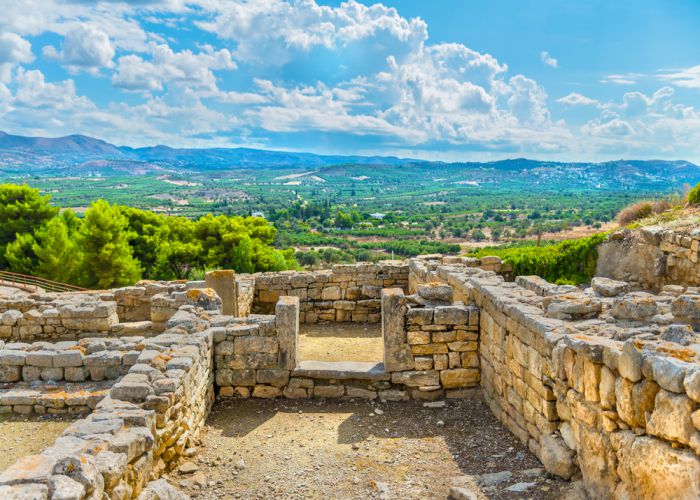 Phaistos Minoan palace, the best things to do in Crete - credits: Luxerendering/Shutterstock.com
Phaistos Minoan palace, the best things to do in Crete - credits: Luxerendering/Shutterstock.com
The largest Minoan palace on Crete after Knossos, the Phaistos Palace, stands on top of an angled message plain, and its archaeological site is a sight for sore eyes.
It was the residence of the king of Greece, Rhadamanthus, and was also the brother of Minos. Phaistos is the source of the mythical Phaistos disk at the Heraklion Archaeological Museum. It is a settlement that existed during the Neolithic time and reached its height around 1200 BC during its fifth iteration.
The town grew during the 17th century and was built with a focus on landscape design.
Take a Boat to the Historic Spinalonga Island
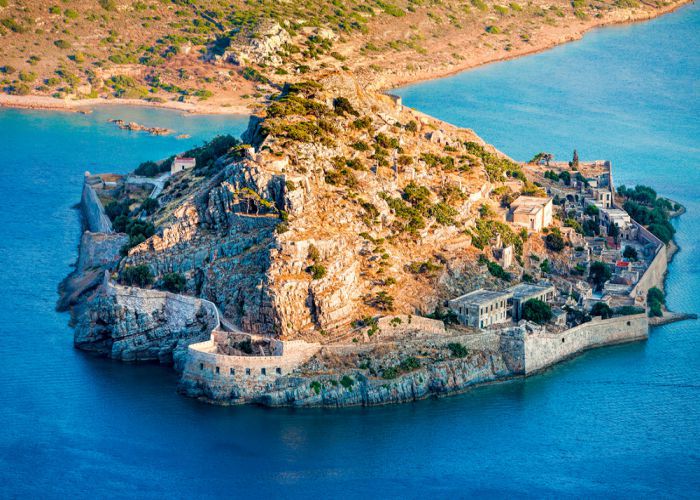
With a dark yet fascinating past and often referred to as ‘the island of the living dead,’ Spinalonga is definitely a site worth visiting, not so much for its staggering beauty as the island itself that lies at the natural harbor of Elounda in the prefecture of Lassithi in Crete is a small barren island of 85 acres.
Still, it holds to the locals for its long history and importance.
The island, which actually became an island following the destruction of the peninsula by the Venetians in 1526, has been inhabited since the mid-15th century.
However, it became famous in recent history worldwide as the host of the leper colony from 1903 to 1957 and as one of the last active leper colonies in Europe, reaching a number of nearly 400 inhabitants during the outbreak of the illness.
Under inhumane conditions and heavily ill, the lepers managed to build a community and make a life for themselves.
The captivating story of Spinalonga's former leper colony has been told in a book by author Victoria Hislop -which is certainly worth a read- while it even became a series on Greek television.
Nowadays, Spinalonga has left its tainted past behind, and it is the second most visited archaeological site of Crete after Knossos!
Explore the Heraklion Archaeological Museum

If you take pride in being a rather cultured traveler, then the Heraklion Archaeological Museum should be a must-visit site in your itinerary.
The Archaeological Museum of Heraklion was founded in 1908 to host the first collections of Cretan antiquities found in the archaeological site of Knossos that have since been rapidly enriched. It was rebuilt in the 1930s and was characterized as an innovative example of a modern architectural specimen.
After its final renovation in 2014, the exhibition occupies a total of twenty-seven halls.
Its exhibits cover a period of seven millennia, from the Neolithic period to the Roman times. The collections are structured chronologically and thematically and accompanied by surveillance media and introductory texts.
The famous Minoan art is displayed through thousands of exhibits.
At the same time, burial findings reveal beliefs and practices related to posthumous life, while findings such as ornaments, mosaics, and inscriptions indicate prosperity and reflect life images.
Coinage developed in a separate section attests to the prosperity of cities and the activity of the Cretans as mercenaries in the eastern Mediterranean.
Marvel at the Fascinating Exhibits of the Museum of Ancient Eleftherna

Impressive exhibit from the Museum of Ancient Eleftherna - credits: mae.uoc.gr/
The Museum of Ancient Eleftherna - the first museum of an archaeological site in Crete and the fourth of its kind in Greece after the museums of Olympia, Delphi, and Vergina - aims to take all visitors to the dawn of Greek civilization and Homer.
It aims to allow them to admire a multitude of findings from the long-term archaeological excavation, which in an unscathed, naturally beautiful landscape and a pole of attraction for diverse tourism from all over the world.
The three halls of the Museum host the city's entire history from 3000 BC. to 1300 AD: four and a half millennia with objects of daily life and works of art from the prehistoric, geometric, archaic, classical, Hellenistic, Roman, and early Byzantine and Byzantine periods.
Final Thoughts
On your trip to Crete (whether you're traveling from Athens to Crete or Santorini to Crete), one thing is for sure: you will get to combine culture, nature, and fun in a unique landscape! Pack your bags, follow our advice, and success is guaranteed!






